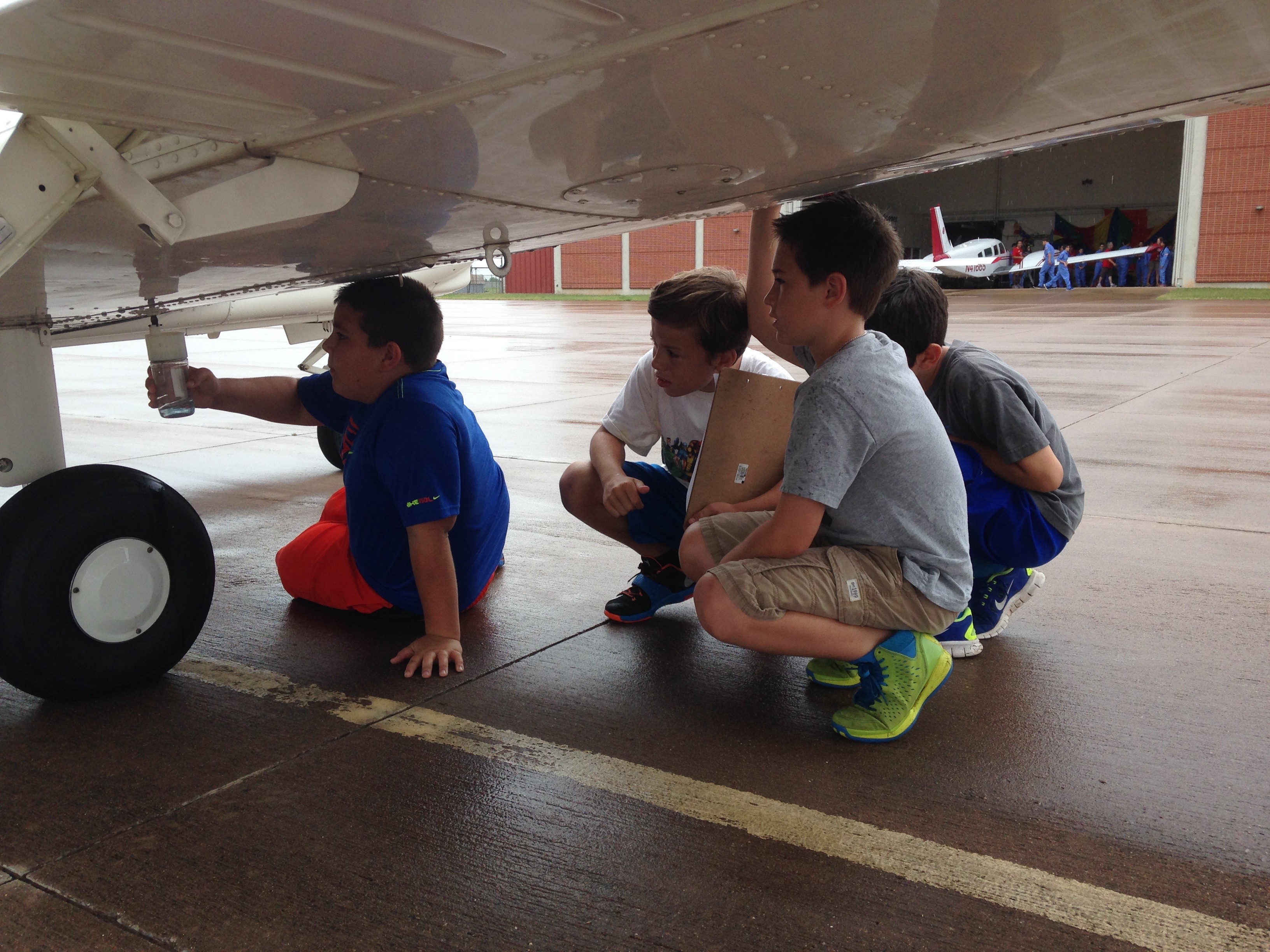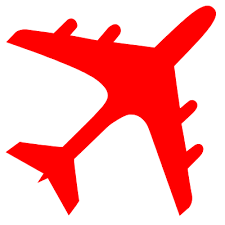Summary
How does someone become an airplane pilot? What kinds of work do they do? How do they keep planes up in the air and get them where they need to go? This series of activities will help you to better understand the skills needed to be a pilot and to see if this career might be a great fit for you! Airplane pilots fly both people and cargo all over the world. Some even work as drone pilots. Airplane pilots are detail-oriented problem solvers who can work well under pressure. The need for pilots is expected to increase over the next 20 years, so if you become a pilot, you may find yourself in high demand.
Overview
Do you love to travel and see new places? Do you enjoy solving problems and helping others? Then a career in transportation, distribution, and logistics just might be right for you! Workers in the Transportation, Distribution, and Logistics career cluster get to travel, move people and things from one place to another, and plan out the best ways to get things on the move. One of the many careers that falls into this cluster is an airplane pilot.

Airplane pilots can fly planes for commercial or private companies, for the military, or for farming purposes. They fly people and cargo all over the world. Some work as drone pilots and fly from the ground! The average salary for an airplane pilot is $85,000 per year.
Airplane pilots go to flight school to learn skills and get a license. Pilots can earn a private pilot license when they are seventeen years old if they have completed the required hours and are in good health. Spending time logging flight hours and attending special trainings can lead to more work options as an airline pilot. It also helps if pilots know geography, algebra, geometry, calculus, and statistics. That is why, even though college degrees are not required, taking college courses can help you to find the best jobs when applying to companies such as airlines.
Sooner Flight Academy is a great place to start if you would like more information about how to get the training you need to get up in the air. The Academy offers camps and classes for grades K-12 that connect the science of flight to real-world experiences. Attending flight camps can give you an idea of what a pilot's life is like.
The need for airplane pilots is expected to increase over the next 20 years, so there may be lots of new jobs. Pilots need to have a wide range of skills and abilities to successful, including:
Healthy Lifestyle: Pilots have to be in good health. They are responsible for the people in their planes and those walking around below. It is important that a pilot be physically prepared for long flights and stressful situations.
Focus: Pilots must be able to focus on small details to make sure that the plane is ready to fly and then keep the plane on course in the air.
Problem Solving: Pilots have to adapt when the skies around them change. They must be able to analyze a problem to find the best solution for themselves and passengers.
Dependability: People count on pilots to transport them and their cargo safely to their destination.
Lifelong Learner: Pilots need to understand how flight works and be able to read and understand cockpit flight instruments. As technology improves, pilots will have more opportunities to learn and improve their skills, too.
How does someone become a pilot? What kinds of work do they do? How do they keep planes up in the air and get them where they need to go? The following activities will help you better understand the work that pilots do and decide whether this career might be a great fit for you!
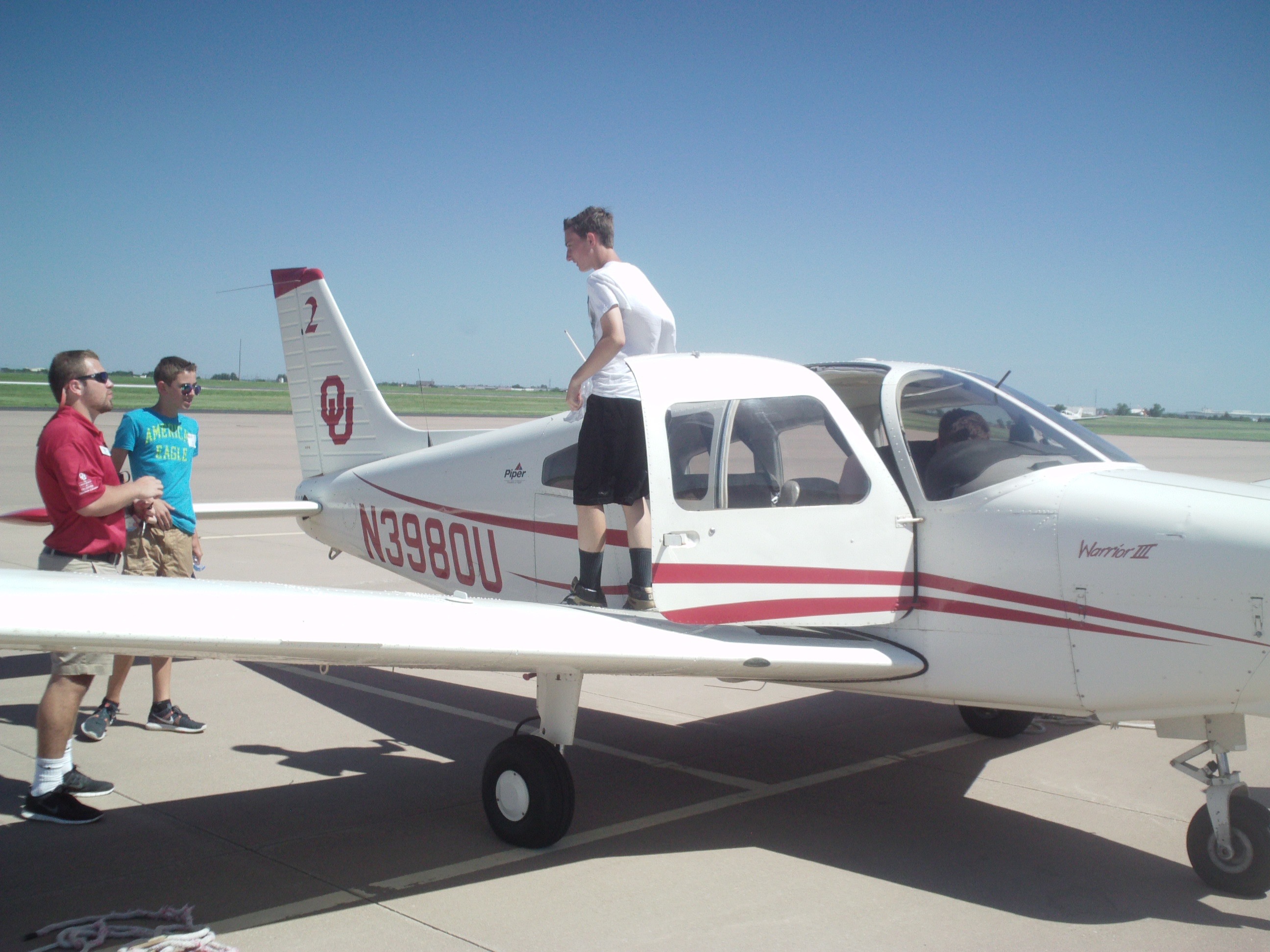
Materials List
Computer or tablet
Internet access
Pencil or pen
Air Fair Student Guide (attached)
List-Group-Label activity (found on Page 7)
My Preflight Checklist activity (found on Page 9)
Printable Paper Airplane (linked below and on Page 10)
Airplane Observations Diagram (found on Page 11)
What to Do
Note that you can use the attached Air Fair Student Guide for the activities on this page. The Student Guide can be viewed on your computer or printed out.
Begin with the first activity, Career Talk, to hear an Oklahoma pilot from Sooner Flight Academy describe what the life of a private airplane pilot is like.
Learn about the importance of a preflight checklist with Check It Out! Test out your skills at being a detail-oriented pilot. Make your own preflight checklist to start your day and see if following it brings you in for a successful landing.
Experiment with a paper airplane in What's Up? Lift! to see what effects the various parts of a plane have on steering, lift, and distance.
Visit Sooner Flight Academy to learn more about a career as a pilot.
Activity 1: Career Talk
Before you take off, let's learn more about what it means to be an airplane pilot from a professional in the field!
Materials
Computer or tablet
Internet access
Pencil or pen
List-Group-Label activity (page 7 of the attached Student Guide)
Instructions
Before you watch the video, start with the List-Group-Label activity. You can use the chart found on page 6 of the Student Guide or make your own. In the "List" column, jot down any words you can think of that the pilot might say in the video.
Visit the following link to watch a video and learn about what life is like for a pilot (or click the embedded version below): https://tinyurl.com/SFAPilot.
After viewing the video, add to your list of words based on what you saw. Were there any words you hadn't thought of?
Do you see some words on your list that go together? Use the "Group" column to record these groups of words. You can even draw circles around them if that helps.
Time to "Label." Look at your groups of words and think about how they are alike. Give each group a title, or label, that describes how they are alike.
What did you learn about the work pilots do? Did anything surprise you?
Activity 2: Check It Out!
Checklists are an important part of pilots' work. To keep themselves and their passengers safe, pilots start every flight by following the same steps in order, taking care to ensure they don't miss a step. Visit the link below from Sooner Flight Academy to see a pilot going through the preflight checklist (or click the embedded version below): https://tinyurl.com/SFAPF.
Pilots must be careful and detail oriented. Can you be as focused and detailed as a pilot? Think about how you start every day. Can you make your own "preflight" checklist to start your day?
Materials
Computer or tablet
Internet connection
Pencil or pen
My Preflight Checklist activity (page 9 of the attached Student Guide)
Instructions
Think about the very first thing you do when you wake up (it might help to act it out). Record this next to the first checkbox in My Preflight Checklist. You can use the chart found on page 9 of the Student Guide or make your own.
Next, record all the other steps you follow in the morning beginning with when you wake up until you start school.
Remember how detailed pilots are. Review your list. Did you miss any steps? Are there things you automatically do that you forgot and left off? Remember that a pilot leaves nothing to chance.
Try out your checklist by acting it out. Was it accurate? Did you leave anything out?
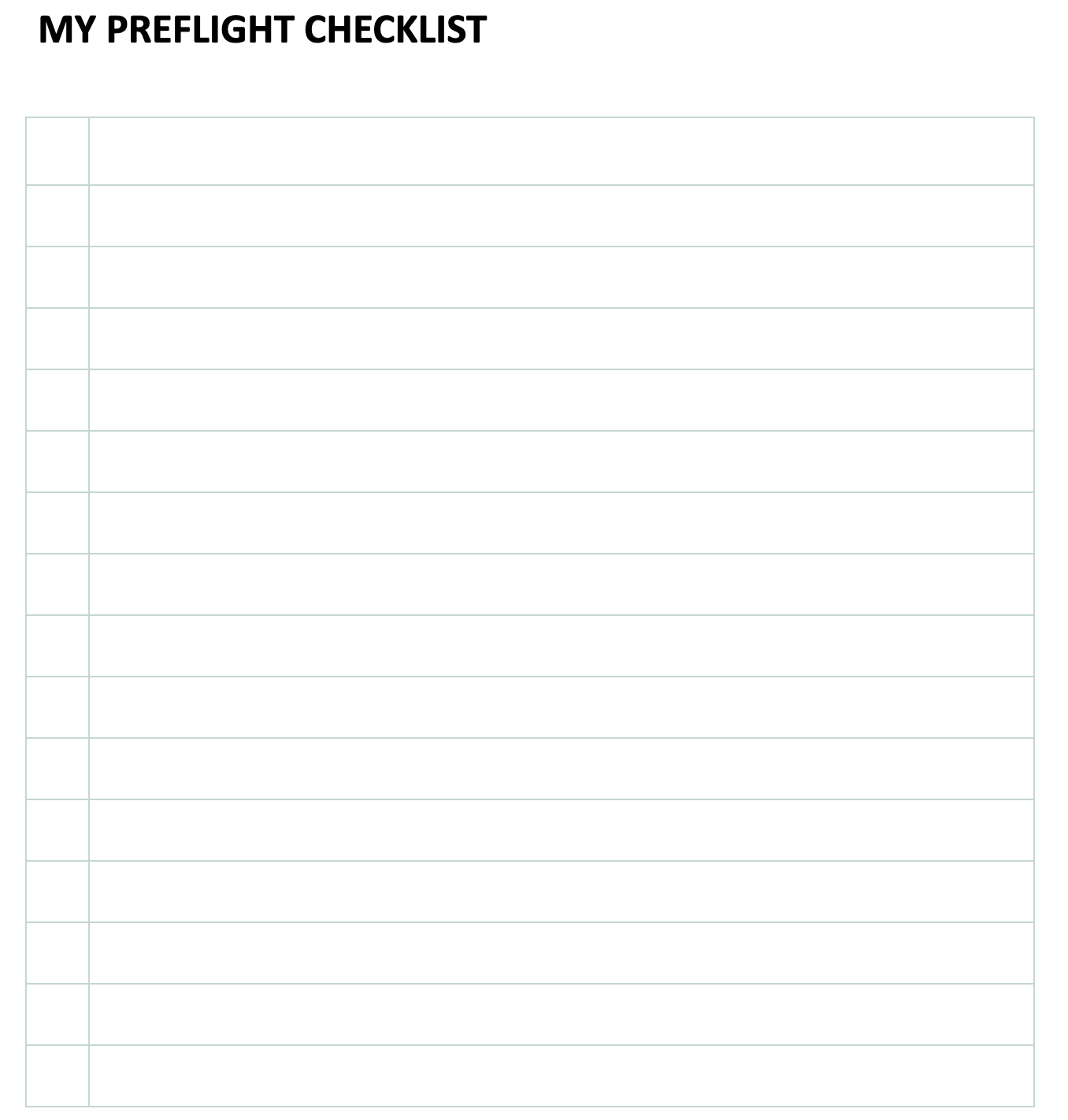
Activity 3: What's Up? Lift!
It is time to get your airplane up in the air—your paper airplane, that is! Using the printable airplane from Sooner Flight Academy linked below, you will get a chance to experience the effects that different airplane parts have on how an airplane travels through the air.
When you make a paper airplane, there are generally two factors that keep it in the air: lift and propulsion. For this activity, you can modify your plane and test the results. Try cutting flaps on the wings, for example. Experiment with these changes to discover their effects on flight.
Materials
Computer or tablet
Internet access
Printable Paper Airplane (click here or visit this link to print: https://tinyurl.com/SFAplane)
Airplane Observations Diagram (page 11 of the attached Student Guide)
Instructions
Print out the paper airplane template from the link above.
Fold and cut, following the directions on the template.
Test out your airplane.
Next, try modifying your airplane by cutting flaps into the wings or folding and cutting other parts of the plane.
Record your observations in an Airplane Observations Diagram to help you remember what each change to the airplane did to your test flights. You can use the diagram found on page 11 of the Student Guide or make your own. Remember that a diagram is a sketch with lines drawn to the different parts and words describing what each part does.
Watch Sooner Flight Academy's video "Parts of an Airplane" to see if your findings match how the parts of a real airplane work.
Extend
Now that you have had some time to experiment with lift, control, and propulsion, let's practice what you know using one of the earliest successful planes ever made!
In this simulation, you will have a chance to fly the Wright brothers' first airplane. See if you can keep your plane in the air longer than their first flight lasted. Can you top the distance from their fourth flight? Watch the replay and see how you performed. It may seem easy at first, but all the variables that keep an airplane in the air can be tricky to manage.
Materials
Computer or tablet
Internet access
Instructions
Visit the National Air and Space Museum's website and try to keep the Wright brothers' plane in the air in this online game: Engineering the Wright Way: 1903 Flyer Simulation.
You also can follow the Wright brothers through their step-by-step invention process in this online game: Engineering the Wright Way: Think Like an Engineer.
Feel ready to be a pilot? Check out these great Sooner Flight Academy Camps:
Falcons Camp for 12- to 13-year-olds.
Eagles Camp for 14- to 18-year-olds.
Sooner Flight Academy offers more resources on its website if you are interested in other careers in aviation.
Summer Camp Partial Scholarships are also available through Sooner Flight Academy.
Want to learn even more?
Take a look at My Next Move to learn more about pilots and the knowledge, skills, and abilities needed in the field. The site also lists other careers related to flight, which you can find here.
Being a pilot isn't the only career to explore in the Transportation, Distribution, and Logistics career cluster. Check out the other careers classified as Transportation, Distribution, and Logistics work to see even more options for careers that let you work while seeing the world, helping others, and solving problems.
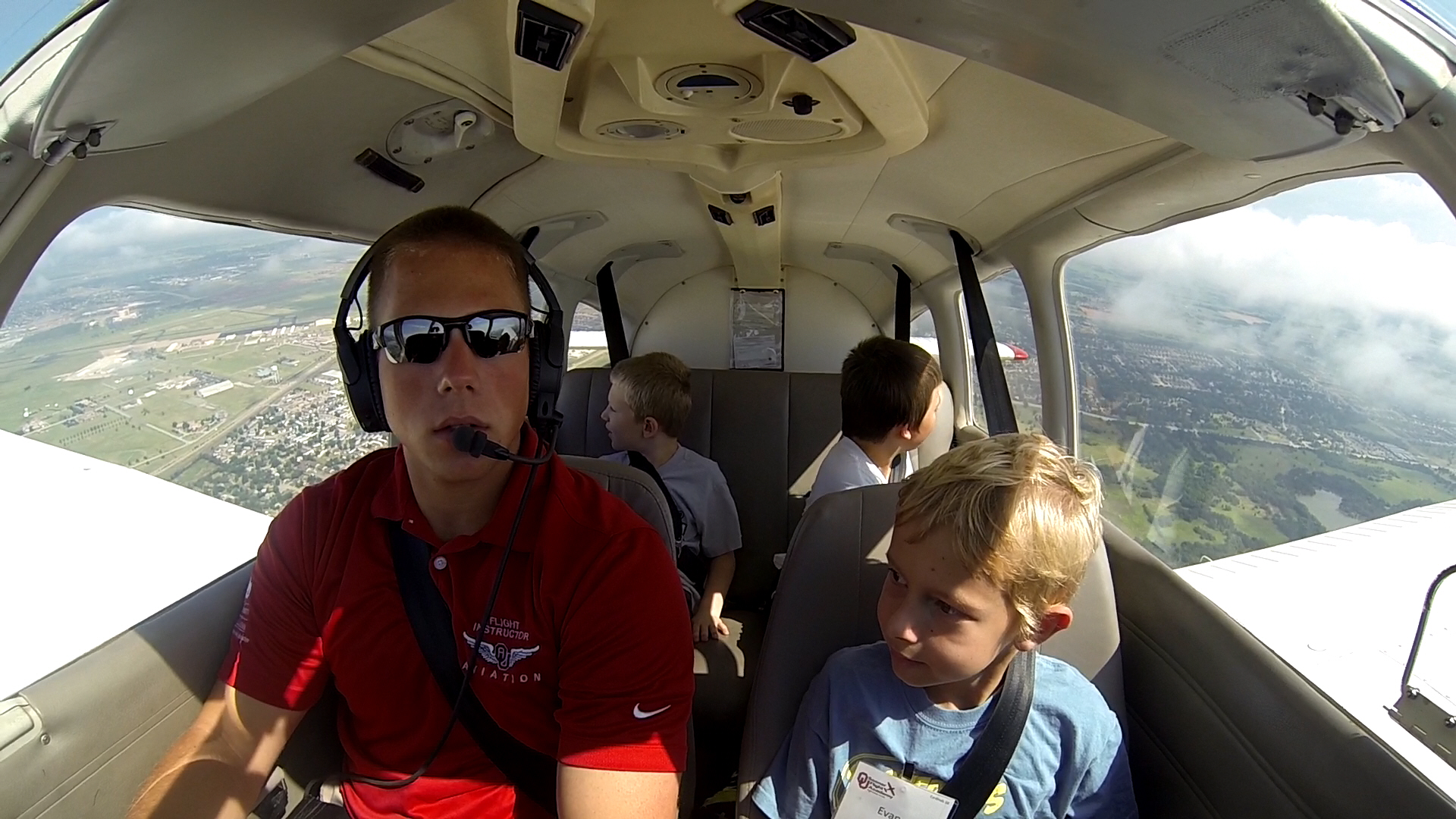
Sources
AOPA. (n.d.). Career Pilot Path. Aircraft Owners and Pilots Association. https://www.aopa.org/training-and-safety/learn-to-fly/flying-for-a-career
Epic Flight Academy. (n.d.). Epic Aviation. https://epicflightacademy.com/
K20 Center. (n.d.). List-Group-Label. Strategies. https://learn.k20center.ou.edu/strategy/55
My Next Move. (n.d.). Search results for airplane pilot. National Center for O*NET Development. https://www.mynextmove.org/find/search?s=airplane+pilot
My Next Move. (n.d.). Commercial Pilots. National Center for O*NET Development. https://www.mynextmove.org/profile/summary/53-2012.00
My Next Move. (n.d.). Careers in Transportation & Storage. National Center for O*NET Development. https://www.mynextmove.org/find/browse?c=48
National Air and Space Museum. (n.d.). Engineering the Wright Way: 1903 Flyer Simulation [Interactive online game]. Smithsonian. https://airandspace.si.edu/exhibitions/wright-brothers/online/workshop/flyer_sim/
National Air and Space Museum. (n.d.). Engineering the Wright Way: Think Like an Engineer. [Interactive online game]. Smithsonian. https://airandspace.si.edu/exhibitions/wright-brothers/online/workshop/index.html
OU Extended Campus. (2020, May 14). Parts of an Airplane [Video]. YouTube. https://www.youtube.com/watch?v=-U4FQ5rvbYw&feature=youtu.be
OU Extended Campus. (2020, May 15). Beginner Preflight [Video]. YouTube. https://www.youtube.com/watch?v=4DIFxm-sBFc&feature=youtu.be
Sooner Flight Academy. (n.d.). SFA-Checking Fuel [Photo]. University of Oklahoma.
Sooner Flight Academy. (n.d.). SFA-Eagles Camp [Photo]. University of Oklahoma.
Sooner Flight Academy. (n.d.). SFA-Flight [Photo]. University of Oklahoma.
Sooner Flight Academy. (n.d.). SFA-Flight2 [Photo]. University of Oklahoma.
Sooner Flight Academy. (2020, November 16). Corporate Pilot Interview [Video]. YouTube. https://www.youtube.com/watch?v=zMEdcL8suno&feature=youtu.be
